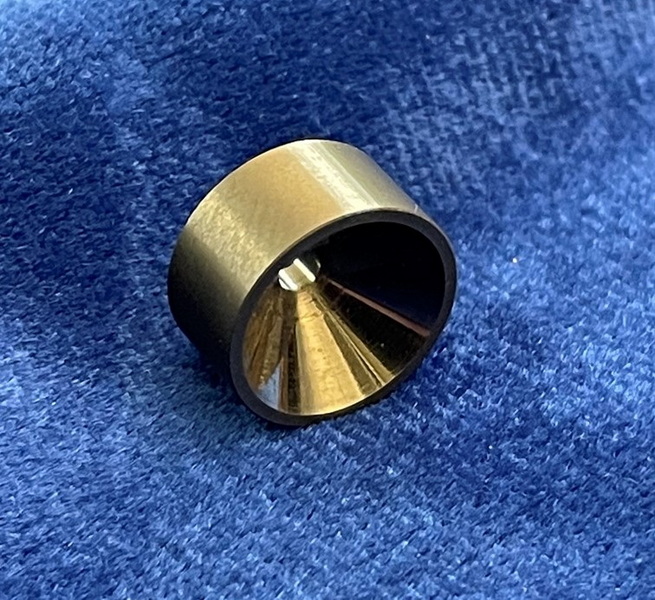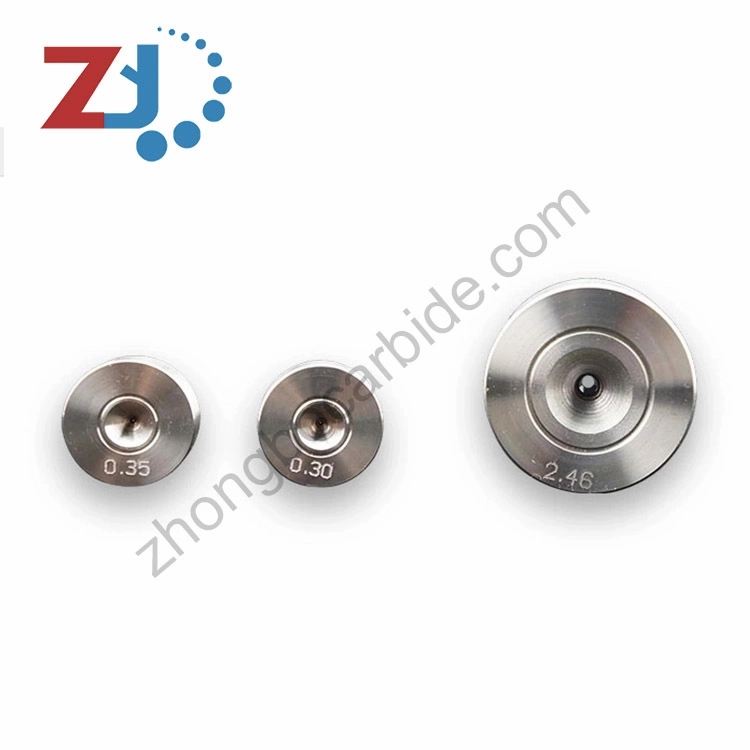Content Menu
● What is Carbide?
>> Types of Carbides
● What is Tungsten Carbide?
>> Key Features of Tungsten Carbide
● Chemical Composition and Structure
>> Carbide (General)
>> Tungsten Carbide
● Physical and Mechanical Properties
>> Additional Properties of Tungsten Carbide
● Manufacturing Processes
>> Carbide Manufacturing (General)
>> Tungsten Carbide Manufacturing
>> Quality Control
● Industrial Applications
>> Carbide Applications (General)
>> Tungsten Carbide Applications
>> Case Study: Tungsten Carbide in Mining
● Comparative Analysis: Carbide vs. Tungsten Carbide
● Environmental Impact and Sustainability
>> Mining and Resource Concerns
>> Recycling of Tungsten Carbide
>> Sustainable Alternatives
● Recent Advances and Innovations
>> Nanostructured Tungsten Carbide
>> Coatings and Surface Treatments
>> Additive Manufacturing
>> Smart Tooling
● Conclusion
● FAQ: Carbide vs. Tungsten Carbide
>> 1. What is the main difference between carbide and tungsten carbide?
>> 2. Why is tungsten carbide preferred for cutting tools?
>> 3. Are there other types of carbides used in industry?
>> 4. Is tungsten carbide the same as cemented carbide?
>> 5. How does the cost of tungsten carbide compare to other materials?
● Citations:
Understanding the distinctions between "carbide" and "tungsten carbide" is essential for anyone working in manufacturing, engineering, or industries that rely on advanced materials for tooling, wear resistance, or durability. While these terms are often used interchangeably, especially in industrial contexts, they refer to different concepts and materials. This comprehensive article will explore the definitions, compositions, properties, applications, and key differences between carbide and tungsten carbide, supplemented with diagrams and visual explanations for clarity.

What is Carbide?
Carbide is a broad term that refers to a class of compounds composed of carbon and a less electronegative element, typically a metal or metalloid. The most common carbides are formed with elements such as tungsten, titanium, silicon, and boron.
Types of Carbides
- Tungsten Carbide (WC): The most widely used industrial carbide.
- Titanium Carbide (TiC): Known for high hardness and chemical stability.
- Silicon Carbide (SiC): Used in abrasives and high-temperature ceramics.
- Boron Carbide (B4C): Extremely hard, used in armor and abrasives.
- Calcium Carbide (CaC2): Used to produce acetylene gas.
Carbides are renowned for their extreme hardness, high melting points, and resistance to wear and corrosion, making them invaluable in cutting, drilling, and abrasive applications.
What is Tungsten Carbide?
Tungsten carbide is a specific type of carbide, formed by combining tungsten (W) and carbon (C) atoms in a 1:1 ratio, resulting in the chemical formula WC. It is a dense, gray powder that can be pressed and sintered into solid shapes for use in industrial machinery, tools, and wear-resistant applications.
Key Features of Tungsten Carbide
- Composed of approximately 94% tungsten and 6% carbon by weight.
- Often combined with a binder, such as cobalt or nickel, to enhance toughness.
- Exhibits exceptional hardness (Mohs 9–9.5), second only to diamond.
- Maintains high hardness and wear resistance at elevated temperatures.
Chemical Composition and Structure
Carbide (General)
- Any compound of carbon with a less electronegative element.
- Structure and properties depend on the metal or metalloid paired with carbon.
- Carbides can be classified as ionic, covalent, or interstitial, depending on the nature of the bonding.
Tungsten Carbide
- Formula: WC
- Crystal Structure: Hexagonal
- Often mixed with binders (e.g., cobalt) to form cemented carbides for industrial use.

Physical and Mechanical Properties
| Property | Carbide (General) | Tungsten Carbide |
| Hardness (Mohs) | 8–9 (varies by type) | 9–9.5 |
| Density (g/cm³) | 2.5–15 (varies) | 15.6 |
| Melting Point (°C) | 2,000–3,000+ | 2,870 |
| Toughness | Varies | High (with binder) |
| Wear Resistance | High (varies) | Extremely high |
| Thermal Conductivity | Varies | 110 W/(m·K) |
| Electrical Conductivity | Varies | Low resistivity (0.2 μΩ·m) |
Tungsten carbide stands out for its combination of extreme hardness, high density, and excellent wear resistance, making it ideal for demanding industrial applications.
Additional Properties of Tungsten Carbide
- Young's Modulus: 530–700 GPa (very stiff)
- Compressive Strength: Up to 7,000 MPa
- Thermal Expansion Coefficient: 5.5 µm/m·K (low, minimizing distortion at high temperatures)
- Fracture Toughness: Enhanced by binders; pure WC is brittle, but cemented carbide is much tougher.
Manufacturing Processes
Carbide Manufacturing (General)
- Powder Metallurgy: Most carbides are produced by mixing metal powders with carbon, then heating (sintering) the mixture to form a solid mass.
- Direct Reaction: Some carbides, like silicon carbide, are made by directly reacting silicon and carbon at high temperatures.
Tungsten Carbide Manufacturing
1. Mixing: Tungsten and carbon powders are blended.
2. Sintering: The mixture is heated to form WC crystals.
3. Binder Addition: Cobalt or nickel is added to improve toughness.
4. Shaping: The composite is pressed and sintered into the desired form.
5. Finishing: Grinding, polishing, and sometimes coating (e.g., with titanium nitride for added performance).
Quality Control
- Microstructure Analysis: Ensures uniform grain size and distribution.
- Hardness Testing: Confirms material meets application requirements.
- Non-Destructive Testing: Detects internal flaws or porosity.
Industrial Applications
Carbide Applications (General)
- Cutting tools (lathe bits, milling cutters)
- Abrasives (grinding wheels, sandpapers)
- Armor-piercing ammunition
- High-temperature ceramics
- Electrical and electronic components (e.g., SiC in semiconductors)
Tungsten Carbide Applications
- Cutting and Drilling Tools: Used in mining, construction, and machining for its superior hardness and wear resistance.
- Industrial Machinery: Components exposed to high wear (e.g., pump seals, valve seats).
- Aerospace and Automotive: Coatings for engine parts and landing gear.
- Jewelry: Rings and watch cases for scratch resistance.
- Medical Devices: Surgical instruments and dental tools.
- Sports Equipment: Ski pole tips, fishing weights, darts.
Case Study: Tungsten Carbide in Mining
In mining, drill bits and cutting tools made from tungsten carbide can last up to 10 times longer than those made from high-speed steel. This longevity reduces downtime, increases productivity, and lowers overall operational costs.
Comparative Analysis: Carbide vs. Tungsten Carbide
| Feature | Carbide (General) | Tungsten Carbide |
| Definition | Broad class of carbon compounds | Specific carbide: WC (tungsten + carbon) |
| Composition | Varies (e.g., TiC, SiC, B4C) | ~94% tungsten, ~6% carbon |
| Hardness | High (varies by type) | Extremely high (Mohs 9–9.5) |
| Industrial Use | Abrasives, ceramics, tools | Cutting tools, wear parts, jewelry |
| Cost | Varies by material | Higher due to processing complexity |
| Common Alias | Carbide | Often called "carbide" in industry |
| Thermal Stability | Varies | Excellent at high temperatures |
| Corrosion Resistance | Varies | Good, especially with appropriate binders |
Key Point:
When "carbide" is mentioned in industrial contexts—especially in tooling and molds—it almost always refers to tungsten carbide unless otherwise specified.
Environmental Impact and Sustainability
Mining and Resource Concerns
Tungsten is a relatively rare element, and its mining can have significant environmental impacts, including habitat disruption, soil and water contamination, and energy consumption. Responsible sourcing and recycling are increasingly important in the industry.
Recycling of Tungsten Carbide
- Recycling Rate: Up to 60% of tungsten carbide tools are recycled.
- Process: Used carbide tools are collected, crushed, chemically treated, and reprocessed into new products.
- Benefits: Reduces demand for virgin tungsten, lowers environmental impact, and often results in cost savings.
Sustainable Alternatives
Research is ongoing into alternative binders (e.g., iron-based) and the use of nanostructured carbides to improve performance while reducing reliance on critical raw materials.
Recent Advances and Innovations
Nanostructured Tungsten Carbide
- Nano-grained WC: Offers higher hardness and toughness compared to conventional WC, opening new possibilities in micro-machining and advanced manufacturing.
Coatings and Surface Treatments
- Diamond-like Carbon (DLC) Coatings: Applied to tungsten carbide tools to further enhance wear resistance and reduce friction.
- Multi-layer Coatings: Combine different materials (e.g., TiN, Al2O3) for tailored performance in specific applications.
Additive Manufacturing
- 3D Printing with Carbides: Emerging technologies allow for the additive manufacturing of carbide-based components, enabling complex geometries and rapid prototyping.
Smart Tooling
- Embedded Sensors: Some modern carbide tools include sensors for real-time monitoring of wear and performance, enabling predictive maintenance and improved efficiency.
Conclusion
While the term "carbide" encompasses a wide range of carbon-based compounds with metals or metalloids, "tungsten carbide" refers to a specific, highly engineered material that dominates industrial applications due to its unmatched hardness, wear resistance, and thermal stability. In most industrial contexts, "carbide" is shorthand for "tungsten carbide," but it's crucial to recognize the broader family of carbides and their unique properties. Understanding these distinctions allows engineers, manufacturers, and end-users to select the optimal material for their specific needs, ensuring performance, durability, and cost-effectiveness.
As the demand for high-performance materials grows, innovations in carbide technology—such as nanostructured carbides, advanced coatings, and sustainable manufacturing—are shaping the future of tooling, machining, and wear-resistant applications. By staying informed about the differences and advancements in carbide materials, industries can make smarter choices that benefit both their operations and the environment.

FAQ: Carbide vs. Tungsten Carbide
1. What is the main difference between carbide and tungsten carbide?
Carbide is a general term for compounds of carbon with less electronegative elements, while tungsten carbide is a specific compound of tungsten and carbon (WC), known for its exceptional hardness and industrial use.
2. Why is tungsten carbide preferred for cutting tools?
Tungsten carbide offers extreme hardness (Mohs 9–9.5), high wear resistance, and maintains these properties at high temperatures, making it ideal for cutting, drilling, and machining applications.
3. Are there other types of carbides used in industry?
Yes, other carbides such as titanium carbide (TiC) and silicon carbide (SiC) are used as abrasives, in ceramics, and for high-temperature applications, but tungsten carbide is the most common for tooling.
4. Is tungsten carbide the same as cemented carbide?
Cemented carbide refers to composite materials made by binding carbide particles (usually tungsten carbide) with a metal binder like cobalt, resulting in a tough, wear-resistant material for industrial tools.
5. How does the cost of tungsten carbide compare to other materials?
Tungsten carbide is more expensive than pure tungsten or other carbides due to its complex manufacturing process and superior properties, but it offers longer tool life and better performance in demanding applications.
Citations:
[1] https://www.carbide-part.com/blog/carbide-vs-tungsten-carbide/
[2] https://konecarbide.com/tungsten-vs-tungsten-carbide-differences-explained/
[3] https://www.linde-amt.com/resource-library/articles/tungsten-carbide
[4] https://www.linkedin.com/pulse/applications-tungsten-carbide-zzbettercarbide
[5] https://en.wikipedia.org/wiki/Tungsten_carbide
[6] https://eurobalt.net/blog/2022/03/28/all-the-applications-of-tungsten-carbide/
[7] https://www.samaterials.com/content/cemented-carbide-vs-tungsten-steel.html
[8] https://www.cncsparetools.com/new/Difference-between-solid-carbide-and-Tungsten-steel.html
[9] https://engraverscafe.com/threads/carbide-vs-tungsten-carbide.22760/
[10] https://www.practicalmachinist.com/forum/threads/carbide-vs-tungsten-carbide-in-tool-realm.336544/
[11] https://www.gwstoolgroup.com/understanding-the-different-types-of-carbide-in-cutting-tools/
[12] https://www.syalons.com/2024/07/08/silicon-carbide-vs-tungsten-carbide-wear-applications/
[13] https://www.imetra.com/tungsten-carbide-material-properties/
[14] https://carbideprocessors.com/pages/carbide-parts/tungsten-carbide-properties.html
[15] https://www.tungco.com/insights/blog/5-tungsten-carbide-applications/
[16] https://www.coweecarbide.com/tungsten-carbide-vs-carbide-drill-bits/
[17] https://www.carbideprobes.com/wp-content/uploads/2019/07/TungstenCarbideDataSheet.pdf
[18] https://www.dymetalloys.co.uk/what-is-tungsten-carbide/tungsten-carbide-grades-applications
[19] https://www.linkedin.com/pulse/src-product-knowledge-popularization-what-difference-selac
[20] https://www.azom.com/properties.aspx?ArticleID=1203
















